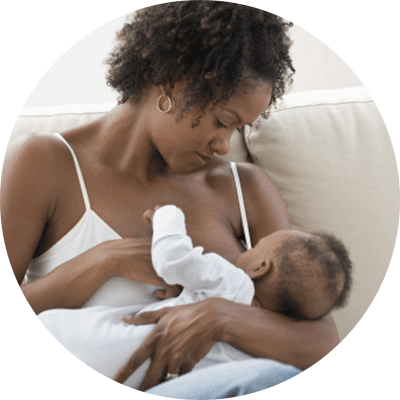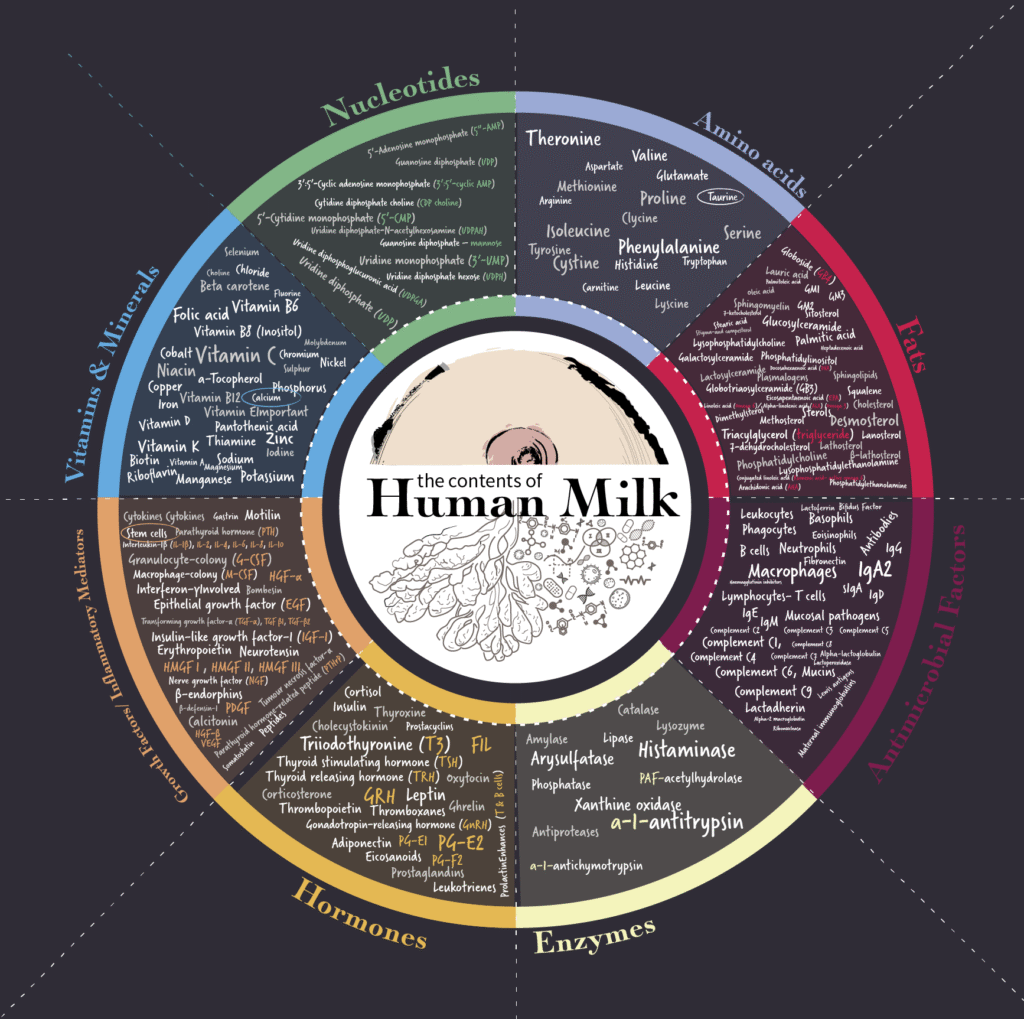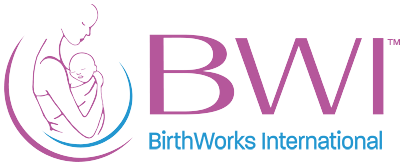Unique Science of BirthWorks
What we offer is evidence-based and academically informed. Growing research about primal health, skin-to-skin, zero separation, plus the deep significance of bonding and breastfeeding, reveals we can trust birth.
This science-based approach assures the best-trained professionals, parents who are well-prepared and happy, and the healthiest babies.
Find Ease in Labor and Birth!
Pelvic Diaphragm Health
The baby of a woman using optimal pelvic positioning finds more space to move through the pelvic cavity, and the supporting muscles of the pelvic diaphragm, to descend into the pelvis for birth. We also teach optimal nutrition that gives these muscles elasticity and tonicity to work more effectively at birth.
Cervical Dilation
The cervix (the ‘neck’ of the uterus) is mostly made up of connective tissue, and its extracellular matrix of collagen fibers determines its strength. As it thins and softens for birth, the decrease in collagen concentration and proteins increases the tissues’ hydration, breaking up the collagen fibers to ripen for birth. This explains how important it is for a woman in labor (and pregnancy) to be well hydrated.
Optimal Pelvic Positioning
Birth is an engineering feat. Babies are already very competent at the moment of birth, and in the passage through the pelvis they always find the most available space so they can make the turns and movements needed to be born. The mother can support baby’s efforts by moving into positions to give that space. Understanding this can build confidence—and often shortens labor.
Nutation and Counternutation of the pelvis
Small movements of the pelvis (sacrum, ilium, and coccyx) change both the dimensions of the pelvic openings and the shape of the cavity. These movements have little importance in our daily lives, but are of great importance during labor and birth. In counter-nutation, the base of the sacrum moves backward and the coccyx (tailbone) moves forward. This allows the diameter of the superior opening of the pelvis (the pelvic inlet) to enlarge. In nutation, the base of the sacrum moves forward and the coccyx moves backward. This helps the inferior opening of the pelvis (the pelvic outlet) to expand. Therefore, movement of the sacrum is essential in labor to make more space for the baby to move through the pelvis. Women lying on their backs, usually with epidurals in place, lose this advantage. The greater advantage comes with being in a variety of upright positions.
Relaxation and the Power of Hands
Soothing, positive words help a woman in labor to relax, but a much more powerful and effective way to support and encourage relaxation is to understand the connection between our hands and our breathing. Simply keeping hands relaxed during labor is a way to help contractions be more effective.
HPA-Axis
Understanding the negative feedback loop of chronic stress, and ways in which it can harm both the pregnant mother and baby, helps us to see how essential it is to encourage positive thoughts so that the body can produce hormones of joy and improve our health. This is especially relevant in terms of labor preparation and during birth.
Neocortex
The thinking brain, when stimulated, is a “brake” to labor. We offer ways to quiet the neocortex to help a laboring woman access her primal brain to help her labor progress.
Birth Physiology and Behavior
Hormonal characteristics are intrinsic to creating the mother-baby bond at birth. Making sure the mother chooses a birth place that feels safe helps create a context where she can secrete hormones that help labor progress—“Is this a safe place?” We speak our hormones… meaning the words we speak will reflect what we are experiencing hormonally, which then can influence behavior (e.g. if labor progresses). Understanding the role of hormones in labor helps a woman and her birth team know ways to provide support.
Reframing Pain
The uterus is the most amazing muscle in a woman’s body—growing through pregnancy and after birth knowing to return to original (fist) size. It knows how to contract down to birth the baby (and to help mother heal quickly after birth). This appreciation gives a woman a sense of wonder at the power she has in her body. This is the gift of birth.
Positive Affirmations
Due to the physics of action, reaction, and resound, affirmations with positive thought patterns always work. If a woman carries negative associations or beliefs about birth, her birth may be more difficult. Positive affirmations can change the focus, resulting in a more joyful and empowering birth experience.
Benefits for the Baby!
Primal Health
Primal Health (from conception to the first year of life) frames best-care practices during a critical time. It sees mother-baby skin-to-skin contact as a fetal agenda crucial for survival. Babies’ experiences in the primal period impact their adult health. We teach a deep appreciation for ways to improve this early physical and emotional health, which empowers and enhances lives.
Nurture Science is Neuroscience
Picking up newborns and holding them as much as possible is the very best choice. Skin-to-skin contact literally saves babies’ lives. The mother-baby dyad, zero separation, and honoring babies’ deepest needs are all possible, with the right information and support.
Microbiome Health
Optimal microbiome health ensures a strong immune system in the baby. Babies who receive most of this “seeding” of their gut during vaginal birth have a decreased incidence of immune conditions, such as allergies, asthma, and obesity. If a cesarean was needed, breastfeeding also makes a huge difference (to help repair and prepare the gut).
Zero Separation
Babies want their mothers. Ask that your baby room with you and hold them a lot (don’t put them down between each feed). This can also be possible for low-weight babies and preemies—you will need to ask. If your baby is in the NICU, you can at least touch them (hand on their belly), and talk to and sing to them, as it will make a difference.
History shows that some babies have died when not held and some babies have lived—against all odds—when mothers listened to their intuition and insisted on holding them.
Pelvic Diaphragm Health
The baby of a woman using optimal pelvic positioning finds more space to move through the pelvic cavity and the supporting muscles of the pelvic diaphragm. This helps the baby descend into the pelvis for birth. We also teach optimal nutrition that gives these muscles elasticity and tonicity to work more effectively at birth.
Cervical Dilation
The cervix (the neck of the uterus) is mostly made up of connective tissue, and its extracellular matrix of collagen fibers determines its strength. As it thins and softens for birth, the decrease in collagen concentration and proteins increases the tissues’ hydration, breaking up the collagen fibers to ripen for birth. This explains how important it is for a woman in labor (and pregnancy) to be well hydrated.
Optimal Pelvic Positioning
Birth is an engineering feat. Babies are already very competent at the moment of birth, and in the passage through the pelvis they always find the most available space so they can make the turns and movements needed to be born. The mother can support the baby’s efforts by moving into positions to give that space. Understanding this can build confidence—and often shortens labor.
Nutation and Counternutation of the pelvis
Small movements of the pelvis (especially of the sacrum and ilium) change both the dimensions of the pelvic openings and the shape of the cavity. These movements have little importance in our daily lives, but are of great importance during labor and birth. In counter-nutation, the base of the sacrum moves backward and the coccyx (tailbone) moves forward. This allows the diameter of the superior opening of the pelvis (pelvic inlet) to enlarge. In nutation, the base of the sacrum moves forward and the coccyx moves backward. This helps the inferior opening of the pelvis (pelvic outlet) to expand. Therefore, movement of the sacrum is essential in labor to make more space for the baby to move through the pelvis. Women lying on their backs, usually with epidurals in place, lose this advantage. The greater advantage comes with being in a variety of upright positions.
Relaxation and the Power of Hands
Soothing, positive words help a woman in labor to relax, but a much more powerful and effective way is to understand the connection between our hands and our breathing. Simply keeping hands relaxed during labor is a way to help contractions be more effective.
Optimal Nutrition
Understanding the power of breastfeeding is key. Human milk changes daily (and even from feed to feed) both over the course of lactation and as the baby grows! Milk consistency depends on the baby’s needs, gives immunity, and offers life-long benefits for health, wellness, and beyond—to help babies thrive mentally, emotionally, and socially.
Even if breastfeeding is not possible, using banked human milk (or infant formula) while chest feeding skin-to-skin provide the best way to nourish, support, and love a baby.
Best "Nourishment" for Babies
We must nourish our children in the best ways, in addition to feeding them. They want to be with you. When skin-to-skin with a loving caregiver, a baby maintains their ideal temperature, relaxes (so their energy goes to their learning and development, not to managing stress), and is exposed to good bacteria for health. Touch, talk to, and sing to them. This is key for all babies, and is especially needed for babies born via cesarean. Think of the early months as a fourth trimester and give comfort similar to what they experienced in the womb.
Breastfeeding for Brain Wiring
Cells that fire together, wire together. Breastfeeding is more than nutrition—it forms the earliest pathways in the limbic or emotional brain. The earlier start has the longest-lasting impact on a baby through adulthood, and the longer a baby is fed by breastmilk, the more beneficial it is. BirthWorks offers parents breastfeeding preparation for empowerment, more ease, and success.
Telomeres for Longer Lives
Telomeres are part of DNA that shorten with each cell division and determine how fast our cells age, wear down, and die. Babies who breastfeed only (no formula or solid foods) in the first six months (or more) of life, have longer telomeres, which slows aging later. There is also a positive inherited generational effect!
Giving solid food before six weeks of age is linked to shorter telomeres. It also causes inflammation and oxidative stress in infants’ guts. This is another reason exclusive breastfeeding is the best nutrition for young babies.
PRIMAL HEALTH RESEARCH

PRIMAL HEALTH RESEARCH
Dr. Michel Odent was a French surgeon and childbirth specialist who compiled decades of epidemiological studies on correlations between the “Primal Period” and lifetime health. Over several decades, we worked with him to share this essential science on primal health! He is an Honorary Member of the BirthWorks Board of Advisors.
The experiences of a baby during the primal period—from conception to the first birthday—impact health into adulthood, spanning a wide variety of medical disciplines. Special care must be taken to ensure good experiences for babies in this sensitive, crucial time.
What is the Primal Period?
The primal period is defined as the time from conception to the first birthday. It includes fetal life, the perinatal period, and the year following birth, so basically the time from conception to one year old. From Dr. Michel Odent: “The period of human development when the basic adaptive systems—those involved in what we commonly call health—reach their maturity was called [the] ‘primal period‘: it includes fetal life, the perinatal period, and the year following birth. I also underlined the need for a simple term in order to get rid of the artificial and obsolete separations between the nervous system, the immune system and the endocrine system. I suggested the term ‘primal adaptive system’ when referring to this network: a way to avoid awkward terms such as ‘psycho-neuro-immuno-endocrinologic system’. Health is how well our primal adaptive system works. ‘Primal health’ is the basic state of health in which we are at the end of the primal period; after that we can take advantage [of] and cultivate this basic state of health.”
What has the exploration of Primal Health taught us?
Although some diseases are purely genetic diseases, epi-genetics shows that both genetic and environmental factors are at the origin of most pathological conditions and personality traits. Gene expression is to a great extent dependent on environmental factors during the primal period. So, questions about timing come before those about genetic or environmental factors.
Some examples include: how caesarean birth appears as a risk factor for obesity in childhood, how the gut flora of obese people is different from the gut flora of lean people, and that the way the human gut flora is established in the perinatal period cannot be the same after a birth via the bacteriologically rich perineal zone compared to a birth by caesarean. It is also probable that studies inspire interpretations based on explorations of the expression of Mitochondrial Uncoupling Protein2 (UCP2) in hippocampal neurons, which confirm the positive effects of stress in the perinatal period on brain development, such as correlations between different types of birth (forceps delivery, vaginal route after breech presentation, or caesarean and comparative IQ). The Primal Health Database also explores the impact of oxytocin (and its relation to the type of birth and its impact on autism and eating disorders). These are just some examples of the depth and significance of the research.
This database is a unique tool providing some clues about this critical developmental period. It contributes to unprecedented classification of health conditions according to their critical period for gene-environment interaction, as many correlations established by epidemiologists can inspire plausible new interpretations.
How can I learn more about Michel Odent’s work?
Dr. Odent’s Primal Health Database is on the BirthWorks website. His latest website https://www.wombecology.com grew from his research on Primal Health. Dr. Odent authored multiple books as well—one classic book in the childbirth field is Birth Reborn, which is available in our shop. Also, you can read more about his work on our blog.
What is Primal Health Research?
“Primal health research is the framework of studies exploring correlations between what happens during the primal period (fetal life, the perinatal period, and the year following birth) and its impact on health and personality traits in later life. The book Primal Health (published in 1986) predicted a new generation of research confirming that our health is shaped during the primal period and, soon after, Dr. Odent opened a research center in London, England. He was later asked to write an updated version of the book but, with the constant evolution in research, he felt it was most effective to compile and share his research via a database, which he began doing quarterly in 1993. Since 1998, this database has allowed us to observe the development of the primal health research (now a recognized term in the literature) and to draw further, significant conclusions. To see all the articles Dr. Odent compiled for decades up to 2021, explore the Primal Health Database here.
How can I learn more about the database? How can I see what is available on a certain topic?
Read more about the value of the database, its history, and its evolution. Learn about more than 1,000 primal health topics, including “The Fetal Ejection Reflex,” “Obesity,” “Stress Deprivation,” and “Cesarean”—just search here by topic.
NURTURE SCIENCE AND IMPROVED NEONATAL OUTCOMES
Dr. Nils Bergman and Jill Bergman are resolutely committed to understanding the impact of the mother-baby connection for optimal neurodevelopment. Their decades-long and recent research proves skin-to-skin contact literally saves babies’ lives!
BirthWorks offers Newborn Care Specialist education and certification to learn: NurtureScience, Neuroscience, and Kangaroo Mother Care (KMC) with our Kangaroula training, mentoring, and certification!

NURTURE SCIENCE AND IMPROVED NEONATAL OUTCOMES

What does published research, based on the Bergmans’ global work, show about immediate skin-to-skin contact after birth?
Research has shown that mother-baby (or surrogate-baby) skin-to-skin contact after birth reduces mortality in infants with a birth weight less than 2.0 kg (4.4 lbs) by 40% once they are clinically stable, which averages three to seven days, but an important 2021 study proved much more: “Among infants with a birth weight between 1.0 and 1.799 kg [2 to 3.96 lbs], those [infants] who received immediate kangaroo mother care had a lower mortality at 28 days than those who received conventional care with kangaroo mother care initiated after stabilization.”
The science now shows that the goal of Zero Separation from the moment of birth has been validated, with a further 25% reduction in infant mortality, helping premature and low birthweight babies to survive and thrive—and potentially saving 150,000 lives each year according to the World Health Organization. This important study calls for a global paradigm shift in infant care, including the development of “Mother Newborn Care Intensive Care Units” to create—as close as possible—zero separation environments. The results of this study, funded by the Bill and Melinda Gates Foundation in a grant to the World Health Organization, were so significant that the trial was stopped early [no need to do further research as planned to prove the hypothesis] on the recommendation of the data and safety monitoring board owing to the finding of reduced mortality among infants receiving immediate kangaroo mother care.
What specific values does this research bring?
- Long-term academic evidence for practical applications can optimize best standard newborn care for optimal health outcomes
- Understanding the mother-baby connection is most significant to health and development, so we must prioritize doing all we can to keep the mother-baby dyad together
- Zero Separation of the mother-baby dyad is our biology, and the baby should never be left alone
- There is an Innate Fetal Agenda—the mother’s presence precisely controls every element of how her infant’s development unfolds—including physiology, heart rate, hormones, appetite, temperature and intensity of activity
- Brain wiring is place dependent—the critical moment of birth is when cells that fire together are wired together.
- There is a key role a Kangaroula can play in whether a baby experiences “nurture” or “protest and despair” at birth
- What we do at birth can help avoid Infant Brain Dysregulation and enhance social connection through life (to avoid the tendency for later social withdrawal)
- Immediate skin-to-skin contact is the best way to support both full-term newborns (born over 37 weeks) and premature babies (born at <37 weeks)—which is around 1-in-10 births—and includes babies who often have severe health issues and extended hospital stays
Where can I learn more about Kangaroulas or about the Bergmans?
- Read these blogs: How is Kangaroula Support Valuable? Why should I get a Kangaroula? or What is a Kangaroula? How does a Kangaroula Support?
- Visit their websites: https://ninobirth.org or http://www.kangaroula.com
- Follow this link to the original published article, Immediate Skin-to-Skin Contact After Birth Improves Survival of Pre-term Babies, New England Journal of Medicine, 27 May 2021
- Read the press release (with concise summary) of the research findings: https://www.eurekalert.org/news-releases/482580
- Find a PDF version of the original article (download or print easily): https://www.nejm.org/doi/pdf/10.1056/NEJMoa2026486?articleTools=true
- Expand your professional credentials with Kangaroula Training Workshops & Certification
What is kangaroo mother care? What does a Kangaroula do?
A Kangaroula speaks for the baby’s needs, minimizes stress for a more peaceful transition, and empowers a mother to read the baby’s signals. How the baby’s brain is wired matters for coping, which is especially important for small or preterm babies. Conversely, a very stressful birth can mean a baby is epigenetically wired in a way that can lead to negative effects in adulthood. This can be minimized by zero separation of mother and baby, thereby creating the familiar SAFE PLACE and caring for them as ONE.
Kangaroulas make nurture science happen! Kangaroulas are the bridge between birth doula care and postpartum doula care. As well as understanding mothers’ needs, Kangaroulas advocate for the baby during birth as well as during the first 1000 seconds, 1000 minutes, and 1000 hours of life! Babies’ experiences are being wired into their brains during this time, so they strongly impact development. Significant neurodevelopment and baby health depends on skin-to-skin and breastfeeding.
Learn more here: Kangaroula Training Workshops & Certification
Why become a Kangaroula?
There is a lack of support for new parents and babies between birth doula and postpartum care, as well as a huge gap in typical medical practices, where babies (especially if premature or in intensive care) are routinely separated from their parents. Research shows this is detrimental to babies’ (very important) initial and ongoing health—in particular the neurodevelopment of their brains and nervous systems! Plus, it saves lives!
Zero separation of mother and baby, especially in the first seconds, minutes and hours of life is critical—even in premature babies—because it equates to less stress and optimal development. What happens in the first few days impacts long-term well-being, breastfeeding success and even the baby’s ability to connect socially (long-term social emotional learning).
Kangaroulas offer intentional care—helping parents be informed before labor, experience ideal support during birth, and optimize best practices once babies are born. Kangaroulas educate by modeling through their actions ways that enhance health, create ease and support by honoring the mom-baby connection, and shift practices which (although maybe well-intentioned) are often detrimental.
Earning your Kangaroula credentials is a wonderful way to offer enhanced services to your clients (and make more money) by helping their babies not just survive—but thrive!
Learn more here: Kangaroula Training Workshops & Certification
MICROBIOME SCIENCE FOR BABY'S OPTIMAL IMMUNE DEVELOPMENT

MICROBIOME SCIENCE FOR BABY'S OPTIMAL IMMUNE DEVELOPMENT
Pregnancy, birth, early skin-to-skin, and breastfeeding are key times to establish a baby’s best health! They provide essential exposure to a mother’s microbiome—the ecosystem of bacteria which is a major determinant of gut and, therefore, immune health.
We offer childbirth and breastfeeding education to empower families about the importance of vaginal birth as the major seeding of the newborn’s microbiome, how cesarean interferes with this, and why breastfeeding and human milk best support healthy infant gut development.
What is the microbiome?
The microbiome is a microscopic community formed by the hundred trillion forms of bacteria, viruses, fungi, protozoa, and their genes that live in every nook and cranny inside of us, and around us in the water, soil, and air.
What role does the microbiome play in long term health and wellness?
The microbiome plays an essential role in digestion and metabolism. It is integral to a strong immune system, providing essential cells that fine-tune our body’s response to threats. Research reveals that the gut bacteria micro-ecosystem is especially key to long-term immunity and well-being.
How does the mother’s microbiome set up the baby’s microbiome?
Microbes acquired from the mother help optimally train an infant’s naïve immune system. Life in the womb, the type of birth they experience (ideally vaginal), and their early interactions with their mother (or other primary carers, if it cannot be their mother) are all key parts of building a healthy infant microbiome.
What is the best way to seed the baby’s microbiome?
Vaginal birth “seeds” the baby’s gut in the optimal way. Exposure to bacteria from the placenta (before birth), experiencing vaginal birth (if possible), and skin-to-skin contact—ideally together with breastfeeding—are the best ways to get a baby’s health on the optimal track.
How is breastfeeding related to the microbiome?
Breastfeeding gives the growing baby more good seeding of their microbiome. In actuality, breastmilk is a creamy, good-bacterial food that strengthens the baby’s immune system. Breastmilk in their gut feeds the good bacteria for health. If mothers can’t breastfeed, another alternative—so they still drink human milk—is to use milk from a milk bank.
If a birth must be a cesarean, what can then be done to best support infant immunity?
Of course, if a cesarean is needed for medical reasons, it is the best option. But in many cases, and most places, the cesarean rate is too high—so only choose a cesarean if it is truly medically indicated for the mother or the baby.
If breastfeeding is not an option, what is best to repair and grow infant immunity?
If there were past issues with breastfeeding, proactively getting these lactation professionals in place for support is key—having them there the earliest hours and days is most significant!
If breastfeeding is a challenge or not possible, consider a milk bank to find breastmilk from another mother. Research local and regional options before the baby is born.
If using formula milk, carefully follow guidelines for both storing unused formula and proper cleaning of bottles and nipples. Prepare the formula exactly as instructed and avoid plastic bottles (which leach plastics into the liquid). Also, minimize—or ideally do not use—antibacterial products at home because they also kill good bacteria!
In all cases, no matter the birth or what babies are fed, always hold the baby skin-to-skin to increase exposure to good bacteria.
How else can a baby’s microbiome and wellness be enhanced?
For all babies, regular skin-to-skin contact—for the minutes, days, weeks, and months following birth—exposes the baby ongoingly to more good bacteria. Every touch and every breath when mothers (or other primary caregivers) are holding babies matter. Skin-to-skin has many other benefits, too, such as enhancing bonding and helping the mother-baby dyad relax.
During pregnancy, it is smart to learn as much as possible and prepare. It is very important to do childbirth preparation (online or with a childbirth educator in your area) and, if possible, connect with a Kangaroula (Newborn Care Specialist), breastfeeding counselor, or lactation consultant.
HUMAN MILK SCIENCE AND OPTIMAL BABY NUTRITION
Human milk—and understanding how to support the most successful, easeful breastfeeding experience for the mother-baby dyad—is exceptionally important. Newborns’ nourishment AND time skin-to-skin with their loved ones make all the difference for babies’ early development and long-term immunity!
Our parent classes and professional workshops teach the significance of breastfeeding for optimal brain and nervous system development—and the ways mothers can succeed. We inspire parents to learn and advocate for support, as well as offer tips on what to expect and how to continually succeed at giving human milk.
Thanks to the Human Milk Foundation for the research and infographic.

HUMAN MILK SCIENCE AND OPTIMAL BABY NUTRITION

What is so important about human milk?
Breastmilk has thousands of individual components that work both individually and in synergy. They evolved to support the development of each unique human organ and tissue. This is why breastmilk and breastfeeding are so significant for newborns and growing babies.
Specifically, how does human milk impact development?
Research has proven that breastmilk helps the brain, immune system, heart, and gut. However, current research shows it also plays a role in supporting the development of long-term health and resilience. Babies who get breastmilk get these ideal benefits.
How do we know there are long-term benefits?
Recent breakthroughs in research on the microbiome, epigenetics (changes in gene function that are heritable), and immunology highlight just how much human milk is essential in helping a baby fight future infections and non-communicable diseases.
What is amazing about how human milk molecules function?
Among the many distinct molecules that make up breastmilk are components that kill cancer cells and reduce pain. There are also stem cells to help an infant’s organs heal and to protect against infection.
How is human milk related to the microbiome?
The infant gut is one of the first microbiomes to develop and impacts normal brain and immune system development (so that it is trained to see helpful or harmful microorganisms). This training (or seeding) process can go on for months—IF the baby’s gut receives only human milk—which provides a chance for all newly developing immune cells to remember infection and fight it for a lifetime!
What are oligosaccharides and lactoferrin, and why do they matter?
Oligosaccharides are ancient, complex sugars, and only humans have over 200 of them! Each mother produces a unique—and changing—fingerprint related to genetics and the environment. Ideally, these are passed to the baby through vaginal birth, breastmilk, and skin-to-skin contact. Interestingly, the baby cannot break down twenty of the complex sugars in breakstmilk into energy, and, instead, they feed good bacteria species which are the foundation of an infant’s healthy gut. (Think of the good seeds in a garden growing up more than the weeds.) These sugars also trick harmful bacteria and viruses into binding onto them rather than onto the gut wall, likely reducing the risks of gastrointestinal issues in premature infants.
Lactoferrin, an ancient protein, has anti-bacterial and anti-viral effects that inhibit cancer cell growth and many infections. It also helps babies absorb and bind their bodies’ iron stores away from their guts (so harmful microorganisms can not use them to survive).
How can we best support breastfeeding and human milk?
Early childbirth preparation (online or with a childbirth educator in your area) and breastfeeding education for parents are key to breastfeeding success. In addition, good lactation professionals and Newborn Care Specialists (Kangaroulas) can help parents understand and be set up to meet the ideal needs of their baby. Lactation support for mothers, early on, and especially if there are or were challenges to establishing breastfeeding, is another important part of supporting breastfeeding. More research (such as the latest research exploring how human milk fights viruses) and resources to develop milk banks and best match donor milk to babies— especially the most vulnerable ones—is also key to success.
How we teach and what our educators and doulas offer
Effects of Love During Labor
Educare
Human Values
Experiential Interactive Learning
Entrainment
Holistic Approach to Birth
Testimonials





